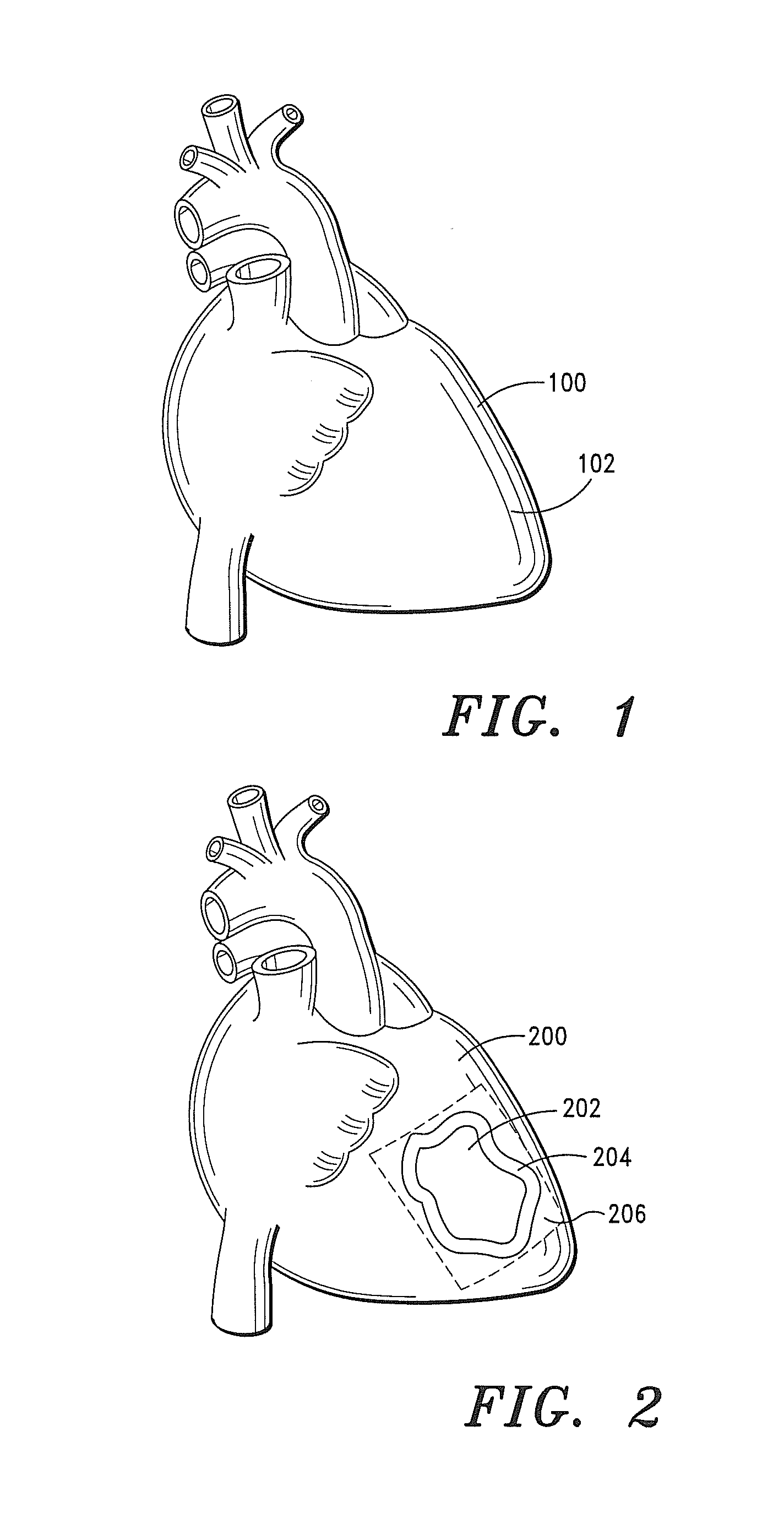Intra-Myocardial Agent Delivery Device, System and Method
- Summary
- Abstract
- Description
- Claims
- Application Information
AI Technical Summary
Benefits of technology
Problems solved by technology
Method used
Image
Examples
example 1
[0228]A 50 year old male, weighing 235 lbs., presents with a myocardium infarction.
[0229]An ECM based pharmacological composition that includes a particulate SIS extracellular matrix material, 3 mg of cerivastatin, and 10 ml chitosan is prepared and charged into a delivery pump.
[0230]An intra-myocardial agent delivery device having four (4) agent delivery tubes is implanted in the subject's myocardium. The agent delivery tubes are positioned within the myocardium wherein two of the tubes are disposed proximate the infarct region.
[0231]The pump is connected to the inlet or central tube of the device and the pharmacological composition is delivered into and through device, and into the myocardium tissue at a rate of approximately 0.25 micrograms / hr.
[0232]Within a period of 10-14 days, the effects of the myocardial infarction are ameliorated, and neovascularization, host tissue proliferation, bioremodeling and regeneration of new tissue are evident.
[0233]As will readily be appreciated ...
PUM
| Property | Measurement | Unit |
|---|---|---|
| Pressure | aaaaa | aaaaa |
Abstract
Description
Claims
Application Information
 Login to View More
Login to View More - R&D
- Intellectual Property
- Life Sciences
- Materials
- Tech Scout
- Unparalleled Data Quality
- Higher Quality Content
- 60% Fewer Hallucinations
Browse by: Latest US Patents, China's latest patents, Technical Efficacy Thesaurus, Application Domain, Technology Topic, Popular Technical Reports.
© 2025 PatSnap. All rights reserved.Legal|Privacy policy|Modern Slavery Act Transparency Statement|Sitemap|About US| Contact US: help@patsnap.com



